TOM REITER
COMING TOGETHER FOR OUR RIVER
2019 Annual Report
FRIENDS OF THE MISSISSIPPI RIVER
Grassroots and public advocacy
Habitat conservation and restoration
Education and community engagement
urged our legislators
to protect our water
on Water Action Day
sent by River Guardians
to decision-makers
regarding threats to the river
and riverfront plans
reviewed and influenced
by FMR staff and advocates
450+
people
28
projects
1,306
messages
of land in our watershed permanently protected
for habitat and clean water
of prairie and woodland seeds spread to create
diverse habitat
of Greatest Conservation Need spotted at
our restoration sites
192
acres
20
Species
1,000+
pounds
OUR IMPACT IN 2019
engaged in field work, cleanups, classroom lessons and more
spent by participants restoring and learning about the Mississippi
built and placed to save rain from overwhelming
our stormwater systems
2,482
youth
157
rain barrels
10,253
hours
Because thousands of you contribute in so many ways,
our collective impact goes far beyond the borders of our cities, our state, even our nation.
In honor of our silver year, we shined the spotlight on our beautiful river and dedicated supporters — FMR volunteers, partners, members and advocates like you — in this 25th-anniversary video.
Our work together
Photos: Tom Reiter, Tom Reiter, Rich Wahls, Ellen Rogers
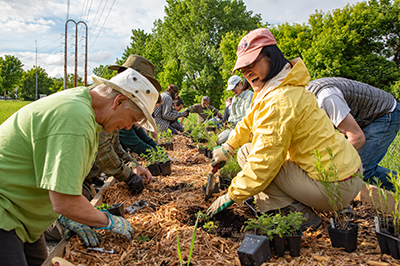
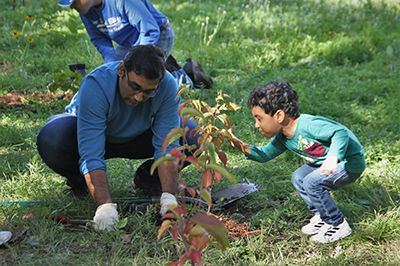
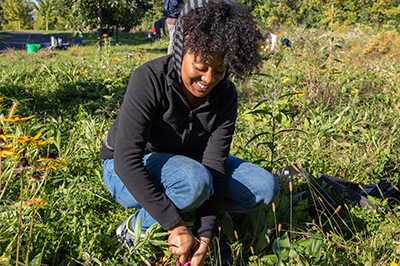
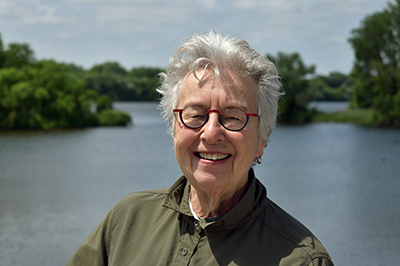
Dear friends of the river,
You know how to do this. You know how to come together to save something beyond yourself. The stories we have to tell from our work in 2019 celebrate this unity and generosity. Just as many waters unite to make our Mississippi mighty, it takes many communities joining together to protect our river.
Coming together for clean water and healthy habitat…
This year, FMR supported 20 organizations and our 2,000+ River Guardians to advocate for new laws to protect drinking water for every Minnesotan. We also formed the Forever Green Partnership with researchers, farmers, agribusinesses and others. This new coalition will support farmers by helping ‘clean-water crops’ take root, which will in turn protect our river from runoff pollution.
Through our collaborations with government, landowners and volunteers, we restored more than 2,000 acres of quality habitat this year. More than 20 at-risk species have made that habitat home.
Connecting communities through the river...
This was the first year of FMR’s Youth Empowerment Program giving metro teens who care about the environment a chance to build experience in the field. We also engaged hundreds of community members in local decision-making — at toxic Ford Area C, at the Upper Harbor Terminal and more.
We think there’s a reason our annual Earth Day cleanup overflowed with nearly 500 participants: The river inspires our belonging, and in turn our responsibility, to this place and to each other.
To all of you who gave time or resources this year to protect, restore and enhance the metro Mississippi, thank you. Like the river, we’re more powerful together.
Our sincerest gratitude,
Ronnie Brooks, Chair of FMR's Board of Directors
OUR STORIES
TOM REITER
EDUCATION
The Youth Empowerment Program pilot takes off
CREATING CONFLUENCES
We can grow a strong, resilient movement for our land and waters only if everyone’s included.
A few years ago we invited Dr. Dorceta Taylor, one of our nation’s preeminent environmental justice scholars, to speak at our fall celebration and work with us and other green groups here in Minnesota. Dr. Taylor helped us ask what we, as environmental organizations, are doing to advance social justice.
Our youth program meets thousands of Twin Cities students in classrooms and clubs. We teach about watersheds, we steward restorations, we lead field research and more. But noting the lack of effective career pathways for some in the environmental field, we wanted to create a longer-term, intensive followup to help bridge the gap between those that engage in our youth programs and those who have the opportunity to land an environmental job.
That’s how the idea for the Youth Empowerment Program was born.
Crafting the program
Last summer we launched a paid, 8-week program to bring together 11 high school students from around the metro area. Because our goal is empowerment, we kicked off the program by asking what these young people wanted to explore. Their input laid the course for our focus and approach.
CULMINATING PROJECTS
Each Youth Empowerment Program participant took on their own independent project to deepen their understanding of an environmental issue, build research skills and impact their communities. Here's a sampling of their excellent work.
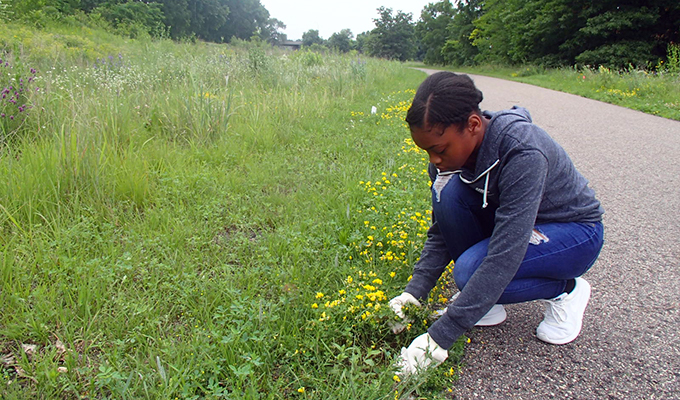
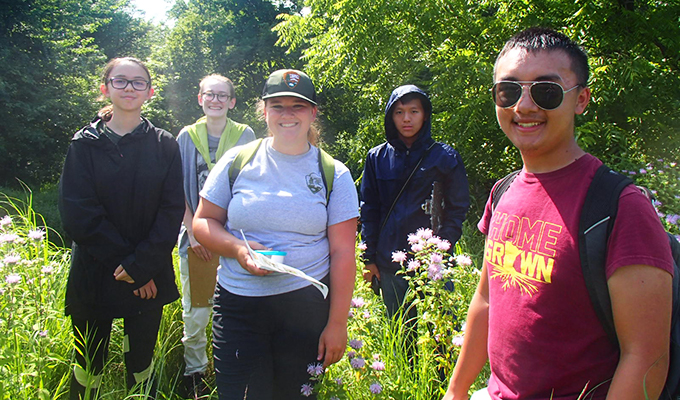

The curriculum we created together
FMR staff members shared skills on everything from ecological restoration to personal finance. We visited a lab for a behind-the-scenes look at nitrogen testing in local waterways. We hosted an environmental justice discussion. And we got out in the field for pollinator and water quality research.
Next year
One participant called the program 'an amazing opportunity to grow life skills and knowledge.'
We thought it was pretty amazing too. We’re already looking forward to next summer’s meeting of minds.
Nora combined her interest in environmental education with her vast collection of monarch eggs, caterpillars, chrysalises and butterflies. She brought her booth to local parks and talked to children at the Shriner's Hospital. With a handmade clay model of a monarch's life cycle and an online survey for booth visitors to give her feedback, Nora set up a sophisticated educational tool that we hope to see at more parks next summer!
Nora's butterfly booth
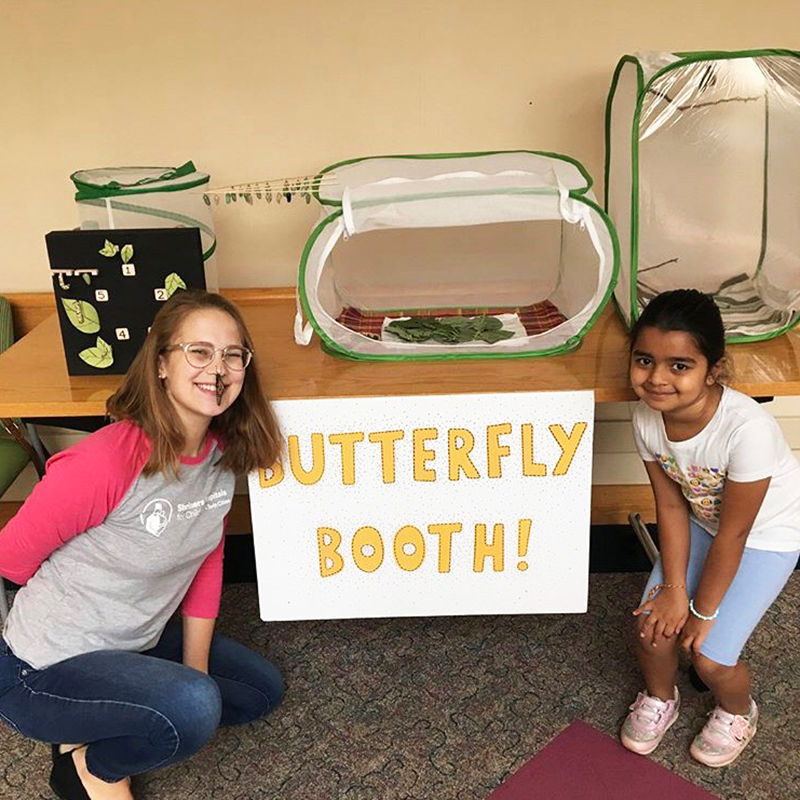

Drawn to wildlife, Jay rescued a baby painted turtle with injuries and eye damage. Determined to protect the turtle from further harm, she researched its needs, cared for it, and learned about the habitat destruction and challenges facing turtles.
Jay made a video of the turtle to kickstart an online awareness campaign about those challenges.
Jay's turtle awareness project
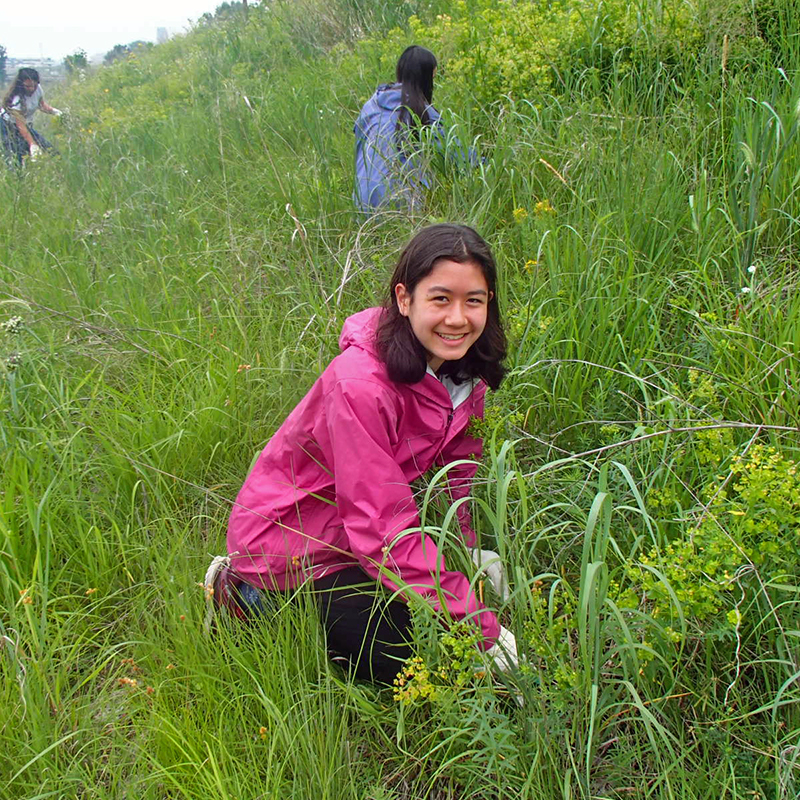
Naomi's article: Nutrient pollution as a global issue
Curious about the dead zone in the Gulf of Mexico, Naomi looked into the detrimental effects of excess nutrients in our water and wrote a quality article on the topic: 'While nutrients are important to maintain healthy ecosystems, nutrients in excess fuels the growth of large algal blooms.'
STEVE CRONIN
WATER PROTECTION
A groundswell protects our groundwater and wells
RAISING A GLASS TO SAFE DRINKING WATER FOR ALL
We believe everyone deserves clean, safe drinking water.
Every year, we convene a coalition of water-related groups from across the state to identify shared water priorities and coordinate our legislative efforts. FMR leads the charge to hammer out a strategy for change.
Together we shaped vital water legislation and state rules in 2019.
Legislature: Increased funding for safe drinking water
As our population grows, the state needs more resources to keep up with keeping our water safe.
This year, we helped boost funding for water testing, treatment plant review, training for operators, inspections and more by boosting the state’s Safe Drinking Water Fee, which hadn’t been increased since 2005.

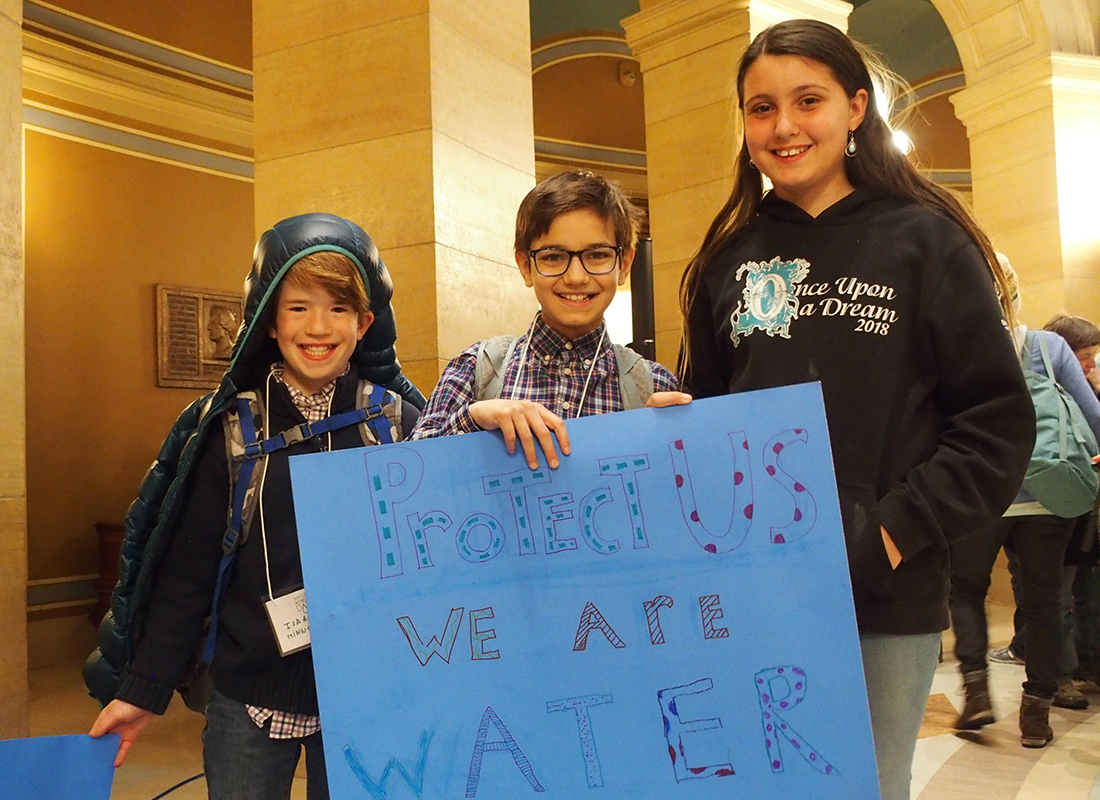
Rulemaking: The Groundwater Protection Rule
Coined the “rural Flint” crisis, water polluted by fertilizer now burdens more than 150,000 Minnesotans. And that number is rising.
While corporations may use dollars to lobby, we’ve got people power.
The voices of our 2,000+ River Guardians helped pass a groundbreaking rule in 2019. The Groundwater Protection Rule creates common-sense limits on when and where farmers can deploy nitrogen fertilizer. Those changes will help protect drinking water for rural Minnesotans.
Photo: Anna Botz
Local singer, speaker, TV reporter and radio talk show host
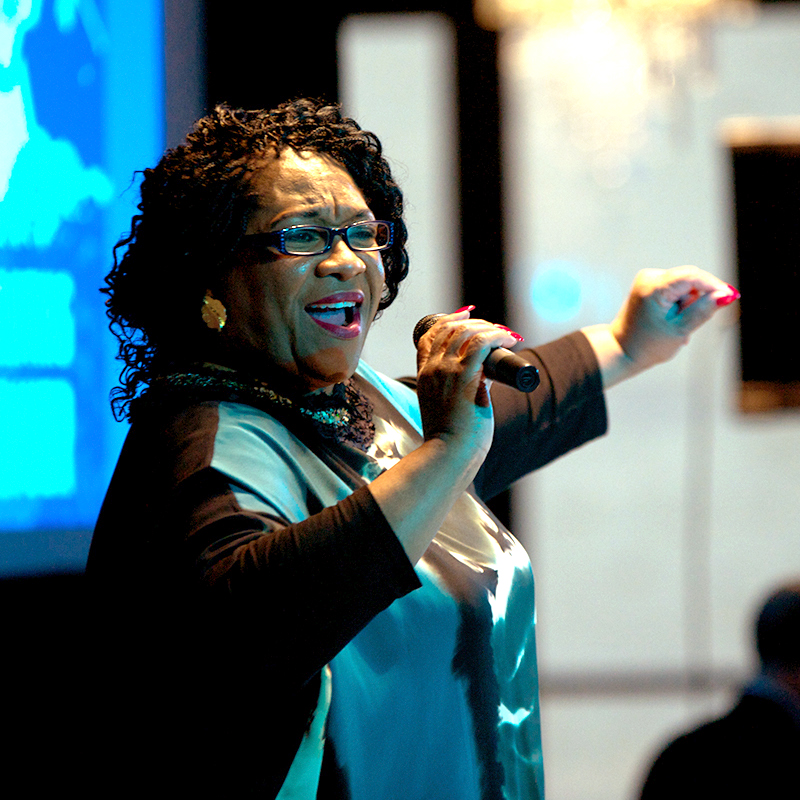
—JEARLYN STEELE
'Here’s why I support Friends of the Mississippi River.
Every morning, I lift a glass of water that the Mississippi has offered to me. It went through all of its iterations and had to come out clean for me to be able to consume it. But the genesis was the Mississippi River.
I hold that glass up and I say, 'Thank you for life, health and strength.' The river brings us life. And FMR protects the river.'
WATER PROTECTION
The Forever Green Partnership takes root
GROWING A NEW ALLIANCE FOR CLEAN-WATER CROPS
Clean-water crops (right) are good for water for the same reason prairies are: year-round deep roots. They hold soil in place, which reduces erosion. And they don’t leak crucial nutrients as much as conventional crops (left). (Illustration: Kimberly Boustead and Emily Sauer)

In Minnesota, farming is part of our identity and our heritage.
If our croplands are the root of the river’s major pollution problem, they are also the solution.
We envision a transition to emerging cropping systems that produce food, fiber and fuel for our economy while also protecting and restoring our waters.
Photos: Anna Botz, Forever Green Initiative, Walton Family Foundation & Practical Farmers of Iowa, FMR
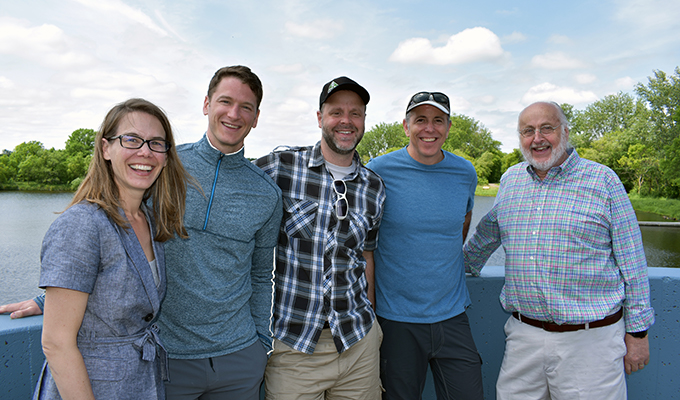
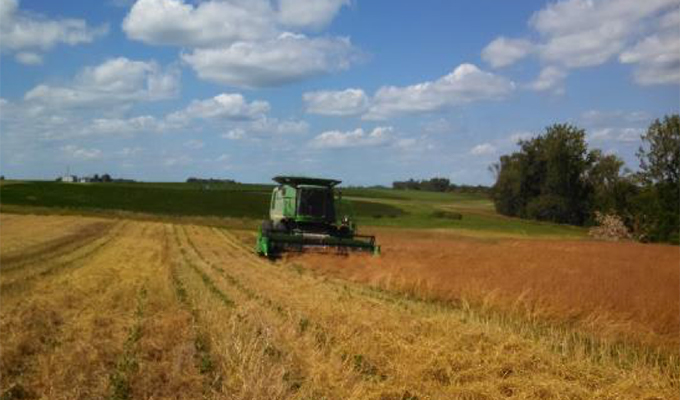
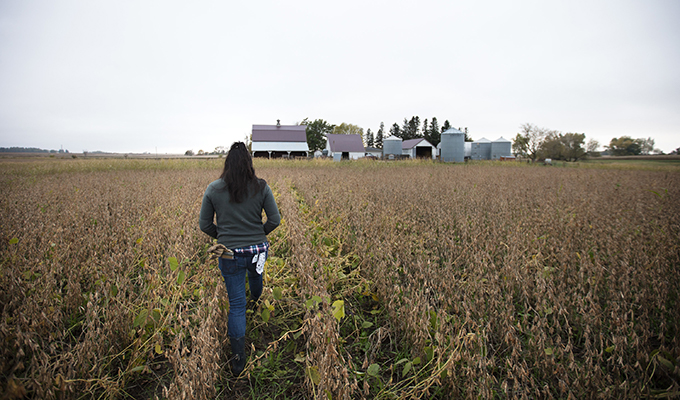
The Forever Green Partnership
We’re building alliances by creating the Forever Green Partnership. Farmers, scientists, economists, agribusinesses and more are coming together to help shift the heartland to clean-water crops, and protect our water and our communities.
Growing to meet the challenge
We expanded our staff capacity this year, hiring a new agricultural policy manager to lead our work with the Forever Green Partnership.Look for more details on this exciting launch later this year.
Legislative gains
In 2019, we advocated for and won a $4.3 million state investment in the University of Minnesota's research and development of clean-water crops and systems.
Agroecology professor at the University of Minnesota
and co-director of the Forever Green Initiative

—DR. NICHOLAS JORDAN
'FMR has played a vital, sustained and highly creative role in developing the Forever Green Partnership, a dynamic public-private partnership pursuing a unique, market-driven pathway to clean water and ecosystem health in agricultural watersheds.
FMR has been essential in forging alliances and moving this work forward.'
CONSERVATION
A 20-year partnership creates habitat
for the rusty patched bumblebee
MAKING A BUZZ IN OUR PRAIRIE RESTORATIONS
Funding for the Pine Bend Bluffs restoration was provided by Flint Hills Resources.
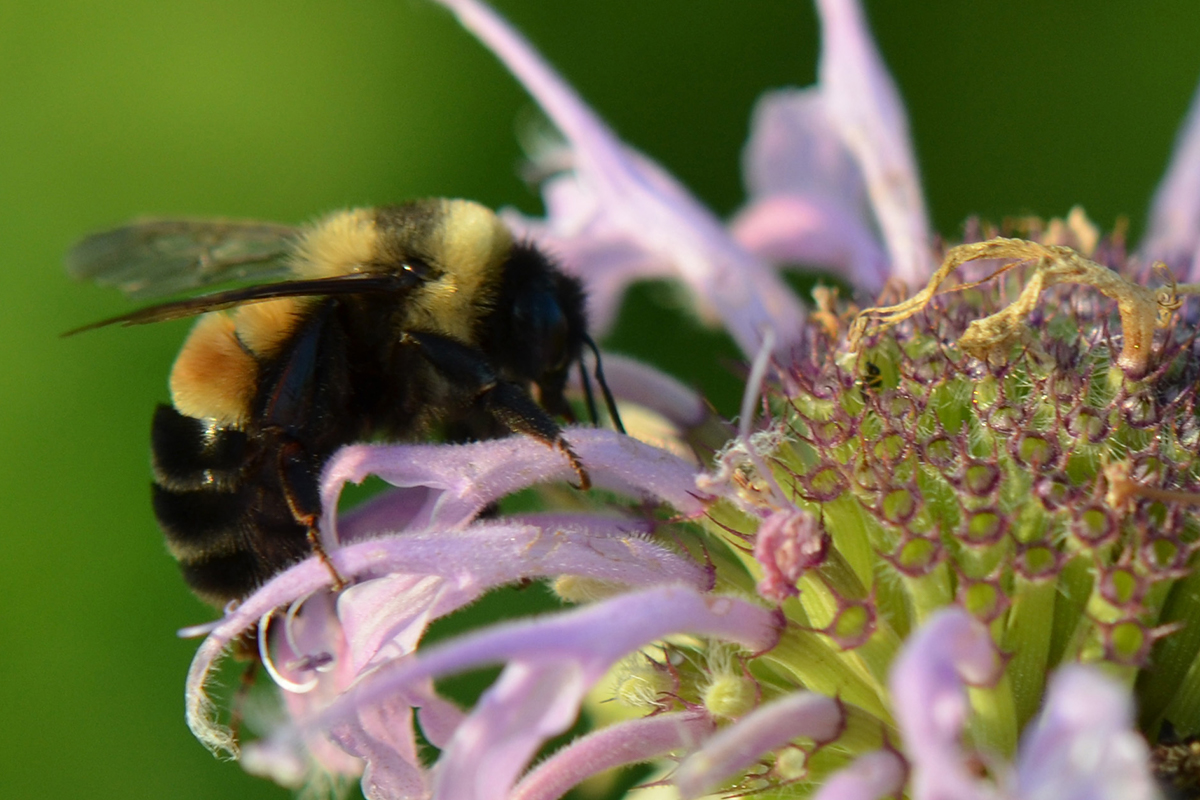
Pollinator decline spells trouble for the whole food web.
Wildflowers produce seeds — food for songbirds and other animals — only if bees and other pollinators visit their blooms. Unfortunately, like many other pollinators, the population of Minnesota’s state bee — the rusty patched bumblebee — has plummeted nearly 90 percent in the past 20 years, largely due to loss of habitat.
But this year our prairie restoration at Flint Hills Resources’ Pine Bend Bluffs land in Rosemount made quite the buzz: The federally endangered rusty patched bumblebee has made this restored habitat home.
We were already celebrating the 20th anniversary of working on this land.
Finding the rusty patched bumblebee at our restoration
shows our collaborative efforts to improve habitat are coming to fruition.
Funding for the William H. Houlton Conservation Area restoration was provided from the Outdoor Heritage Fund, as appropriated by the Minnesota State Legislature.
Photos: Karen Schik, USFWS, FMR, Dakota County wildlife camera, Chris Smith
OUR RESTORATIONS: WHERE THE WILD THINGS ARE
Fishers
Fishers are more common in Minnesota's north woods than our metro forests. But Dakota County spotted a fisher recently at Spring Lake Park Reserve near areas where we've restored prairie and woods. We've got a few pictures to share, thanks to our tracking and their wildlife camera.
More bumblebees
In only its second year, our restoration at the William H. Houlton Conservation Area in Elk River is yielding impressive wildlife gains: from four bumblee species in the first year to nine now, and from 16 individual bees to 575 — including the yellow bumblebee pictured here.
Monarch butterflies
At our prairie restoration in Flint Hills Resources' Pine Bend Bluffs, we've seen increases in the number of monarch eggs and caterpillars. And last fall, we caught video of hundreds of monarch butterflies flitting through the blooming blazing star, collecting nectar fuel for the long journey to Mexico.
CONSERVATION
Teamwork makes a haven for paddlers and plants
at Settler's Island in the Grey Cloud slough
NO ORGANIZATION
IS AN ISLAND
AFTER: DIVERSE HABITAT
BEFORE: BUCKTHORN GALORE
Removal of buckthorn allows a more diverse plant community to thrive. And that means more habitat for river wildlife.
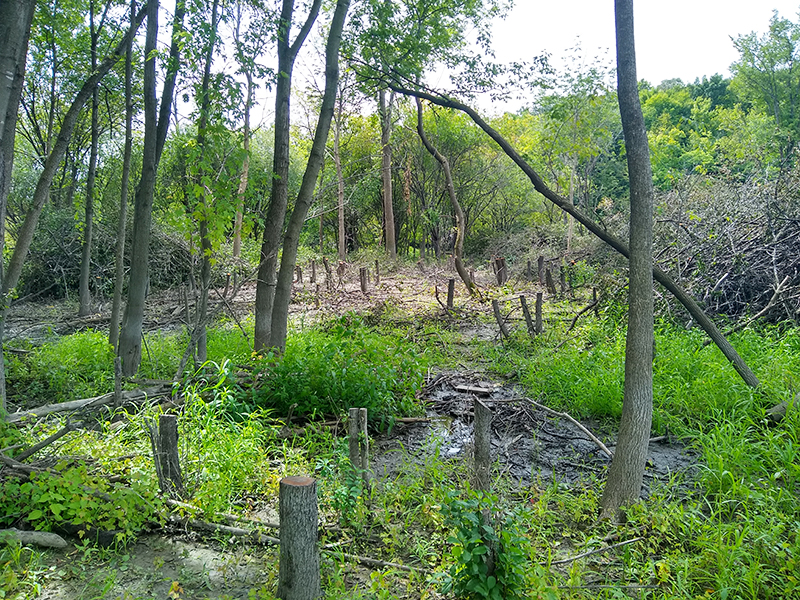
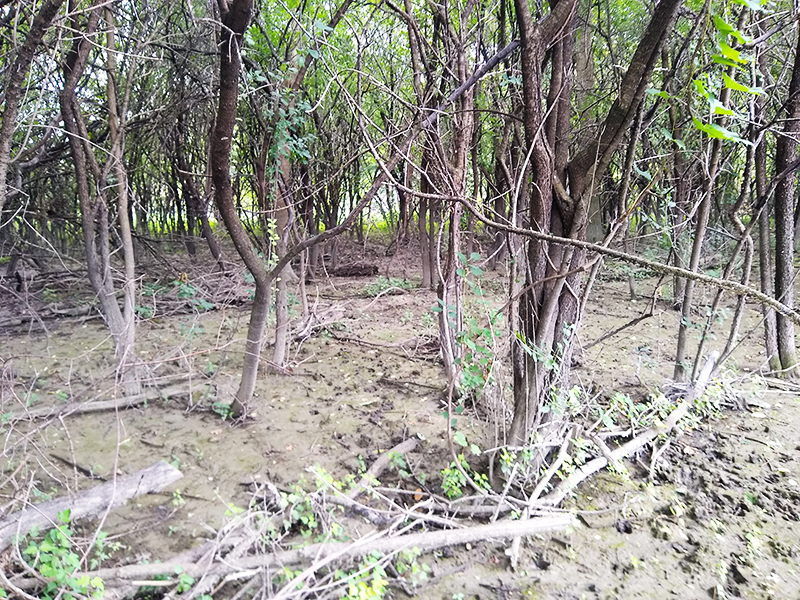
We're planning and leading the restoration on the island.
But we're teaming up with many organizations and volunteers to make it happen.
When we asked Phuong what her biggest takeaway was from her fall semester with us, she said 'The value of partnerships.'
Buckthorn used to shade out most other plants, leaving the island vulnerable to intense erosion.
In September, our conservation intern Phuong Nguyen canoed with a fleet of volunteers to a small island in the Grey Cloud slough near Cottage Grove. We’ve worked there since 2017 to transform the buckthorn-infested floodplain forest into a more welcoming hub for paddlers and wildlife.
And now we’re seeing results.
Funding for the restoration was provided from the Outdoor Heritage Fund, as appropriated by the Minnesota State Legislature.
Photos: Alex Roth, Alex Roth, Alex Roth, Mississippi Park Connection, Mississippi Park Connection, FMR
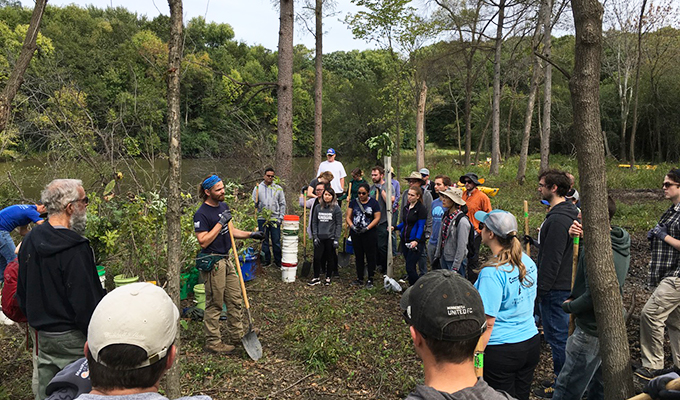
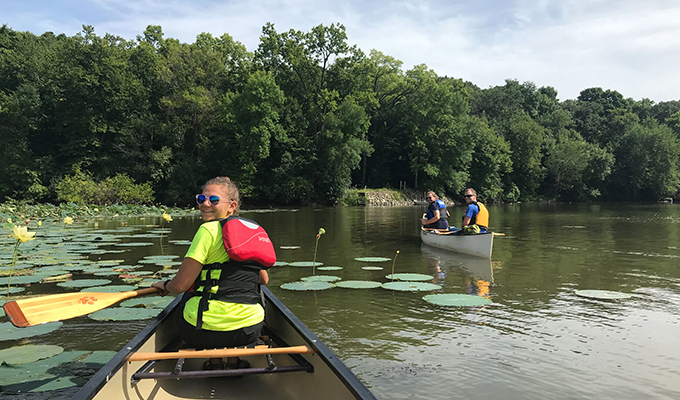
The City of Cottage Grove owns the island. They had the vision to offer residents and recreators another stop on their water trail, and partnered with us to make it happen.
And of course our members and volunteers came together to restore habitat.
Look for this new stop on the water trail later this summer!
In our collaboration with Mississippi Park Connection and the National Park Service, we grew saplings, combined volunteers and borrowed a flotilla.
FMR conservation intern and Macalester College senior
—PHUONG NGUYEN

'I was struck by the large and diverse group of enthusiastic participants at Settler’s Island, from partners to volunteers, and what we could do together.
At the end of our volunteer day, our group of 30 managed to plant 350 trees — on an island! This really shows how much people love and want to protect and restore habitat in the Twin Cities.
As an intern, I was happy to see the results of FMR's longer-term work, from building relationships and writing management plans to engaging community members in such a great event.'
RIVER CORRIDOR
Persistent citizen advocacy influences
the cleanup of the toxic Ford Area C waste dump
GUARDING THE FUTURE FROM THE PAST
Photos: Tom Reiter, Minnesota Historical Society 1925
Photos: Tom Reiter, Minnesota Historical Society 1925, Margie O'Loughlin, Margie O'Loughlin
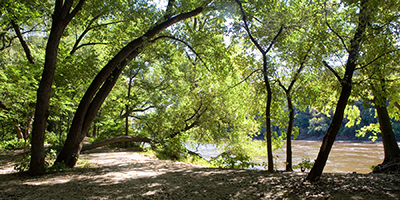

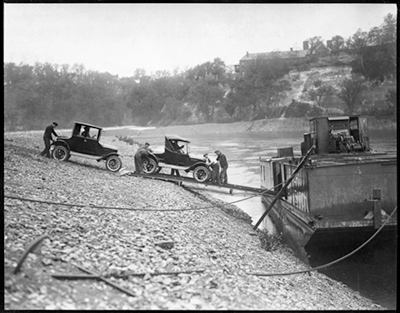
As Ford Motor Company assembled cars on the St. Paul river bluff, they buried and dumped waste on the floodplain until the 1960s.
Thanks to an anonymous tipoff, the Minnesota Pollution Control Agency (MPCA) found out about these practices. They’re now in charge of assessing the damage and ordering a cleanup.
Teaming up with Capitol Region Watershed District, we hired engineers to conduct an independent study. They identified significant gaps in the groundwater monitoring at Ford Area C — gaps that make us doubt that anyone knows what exactly leaks into the river or how climate change-intensified flooding might worsen conditions.
It’s hard to know how to clean up a toxic waste site if you don’t know what’s there. Together, we called on the MPCA to require Ford to expand their testing, monitor through flood cycles, and test for PFAS — forever chemicals unsafe for human health. And we asked for a public meeting, because we believe the community deserves a chance to know the truth before anyone crafts a cleanup plan.
Because we were able to collaborate with other government entities and galvanize more than a hundred concerned community members, we’re proud to say that the MPCA agreed to each of our requests. And together, we’ll continue to shape the future of Ford Area C for as long as it takes to deal responsibly with its past.
FMR board member and project implementation director for the Minneapolis Parks Foundation
—PAUL BAUKNIGHT
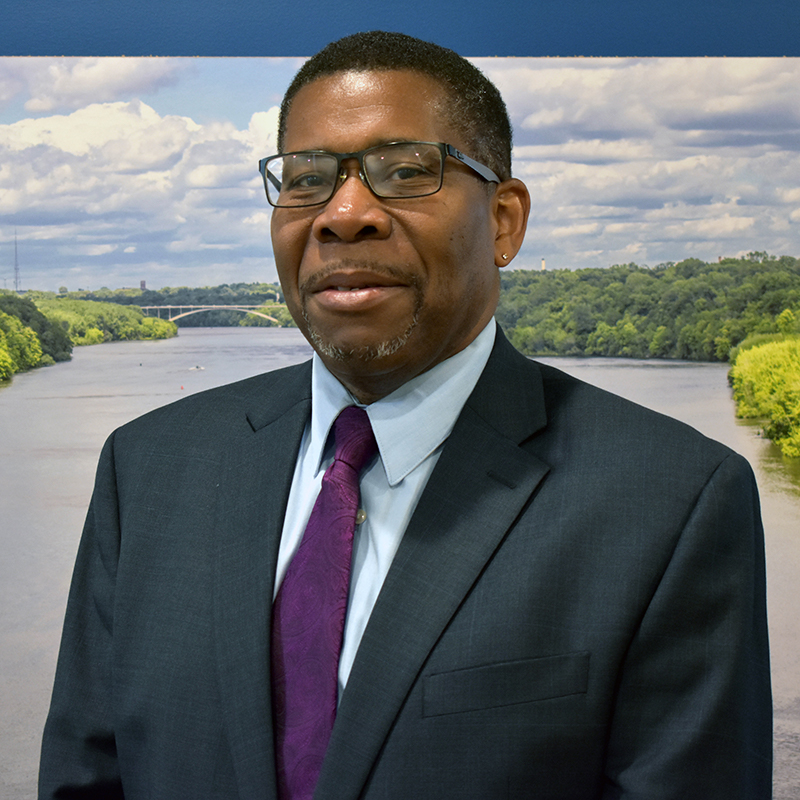
'As we’ve been on this journey together about equity, we’re thinking about what’s the fair and just inclusion of people in our society — which is not a passive sport.
How do we make development along the river for communities what it needs to be, what it should be, what it hasn’t been? How do we make that change? How do we stand up to people when they say, 'Let’s take the easier route?'
In my experience as I’ve worked with FMR at the Upper Harbor Terminal, they’ve been willing to take that stand and say when things are unjust.'
RIVER CORRIDOR
Proactive advocacy prevents erosion
that building too close to the bluff would cause
CALLING BLUFF ON A LILYDALE DEVELOPMENT
2019 was Minnesota’s wettest year on record. As the climate changes and we endure more intense rain and snowmelt, erosion has become an even bigger problem for our river. Our choices around blufftop development can exacerbate the issue and put life, property and the integrity of the river bluffs at greater risk.
Three major landslides have happened in the last decade in Lilydale alone. So when a developer proposed a five-story senior living facility there, just 18 feet from the bluff’s edge, we wanted to get in on the ground floor of the planning process.
Through dialogue with city officials and meetings with the developers, we were able to convey our concerns around the height of the building and the bluff’s vulnerability.
We also reached out to local residents. They understood the serious ecological, scenic and even safety issues with the proposal, and raised these concerns. Within a few months of our efforts, the developer revised their plans, doubling the setback from the bluff’s edge.
This is the kind of proactive dialogue and organizing we believe can protect the river. Before any building begins, we can change the foundation.
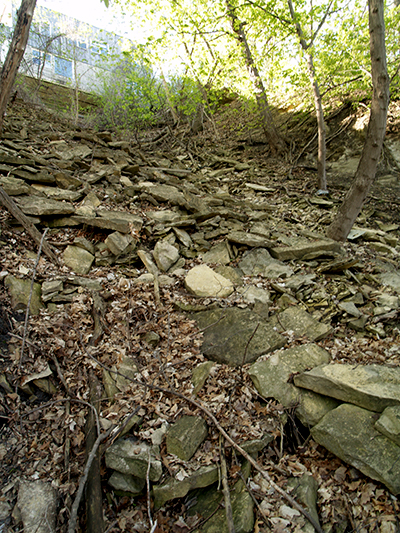
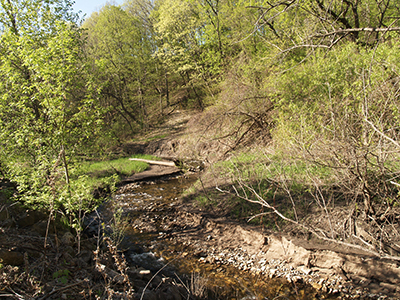
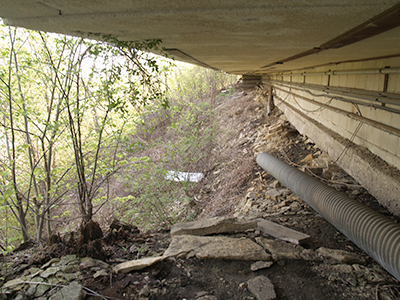
STEWARDSHIP
Volunteers stem out-of-hand invasive plants
MAKING ART,
BREAKING UP INVASIVES
We're restoring habitat in more than 30 places in the metro river corridor.
At each, we uproot invasive plants so that a more diverse community of flora and fauna can flourish.
Forests, prairies and savannas all work best when they're shared between species. But invasive plants bump out others: plants that help hold soil in place, plants where birds nest, plants that make up vibrant, interconnected habitat.
The threat invasive species pose to our habitats is no joke,
but we’re having fun raising awareness and reducing the impact of invasives.
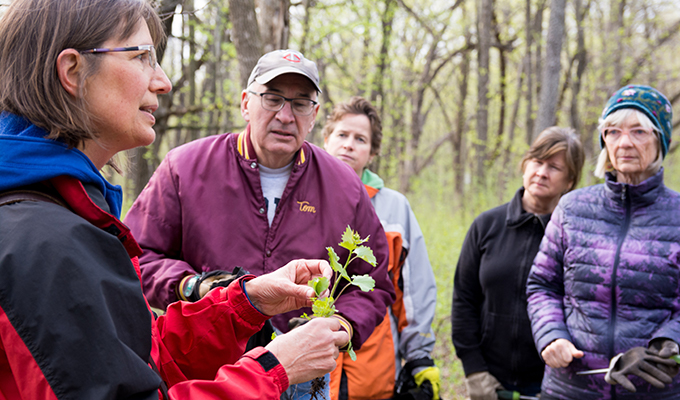
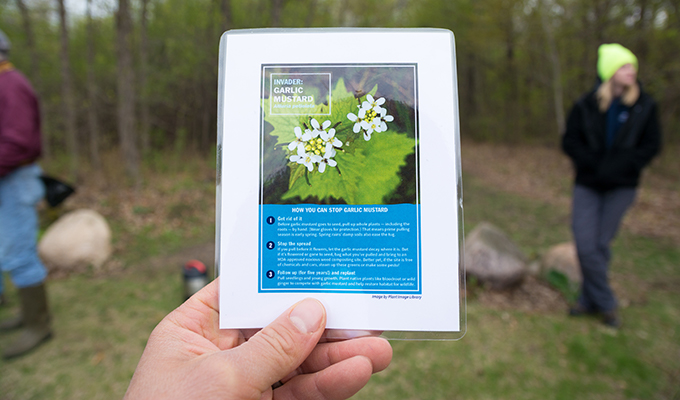
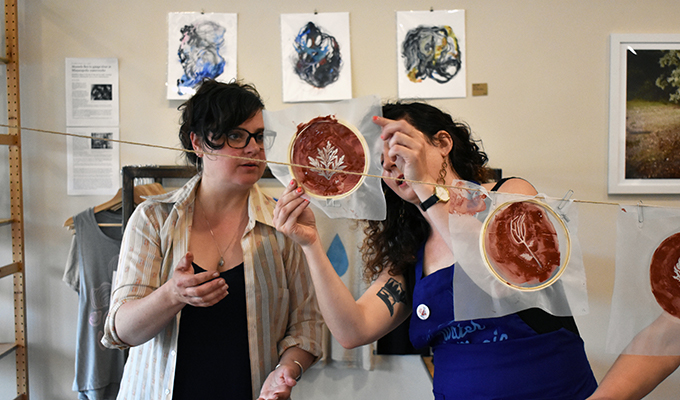
At the Bite Back Potluck, we collaborated with local artists to raise awareness about invasives over a supper featuring edible weeds.
Participants also got to work on art projects to celebrate plants that make habitat rather than break it down.
This year, we handed out invasive species collector's cards as a guide (and a thank you) to our intrepid, invasive-busting volunteers.
If you’d like to learn how to help eradicate invasives and what to plant instead, you can collect all the cards here.
Photos: Rich Wahls, Paul Raymaker, Ellen Rogers, Paul Raymaker
STEWARDSHIP
The Gorge Earth Day cleanup overflows with river friends
A BEAUTIFUL DAY IN THE NEIGHBORHOOD
In 2019, close to 500 people came to our Annual Earth Day cleanup at the Minneapolis River Gorge, our biggest cleanup yet.
That day kicked off a volunteer season of more cleanups, plantings, seed collections and habitat restoration events. You volunteered more than 4,000 hours (often while wet) — more hours than there are miles of the Mississippi River!
Just as important as taking care of the Mississippi’s banks and waters is the connection participants make to each other and to their river.
Neighbors feel a little more at home as they engage in these events.
—Kelsey King, pictured here with Ashantty Zuniga and Laura Guerrero
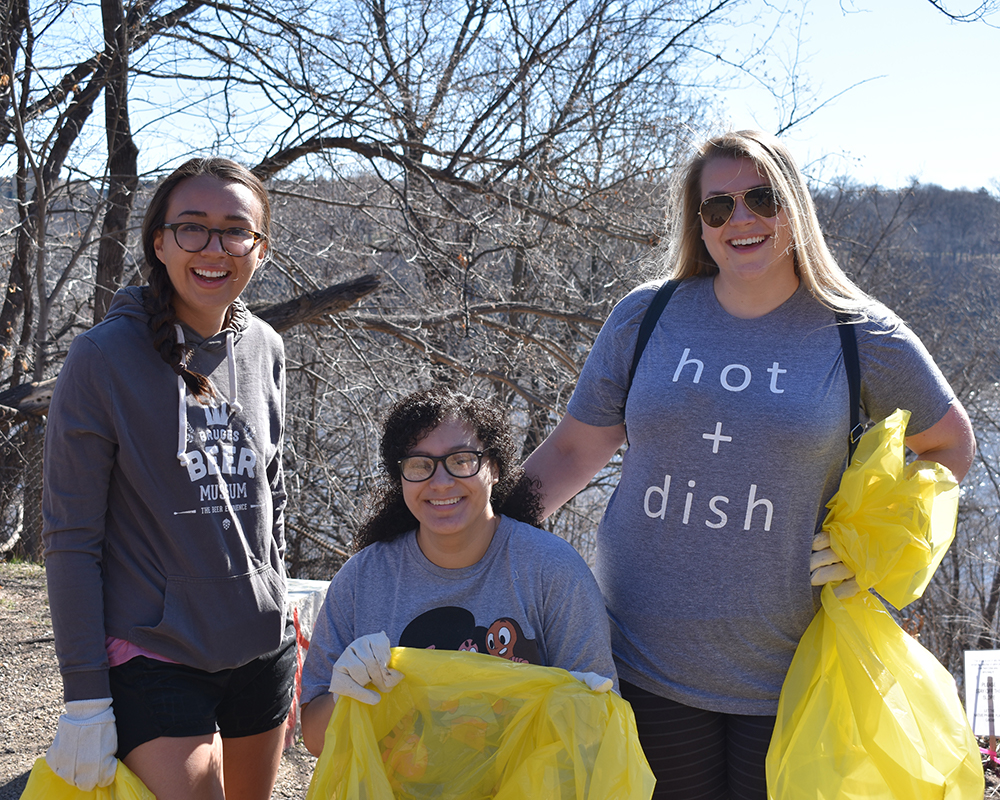
'I just moved here, and I’m impressed with Minnesota’s parks and trails.
They’re so accessible from the neighborhoods.'
—Ellen Palmer, Longfellow resident who came with her partner Scott Alsleben and kids, Lilly and Walter
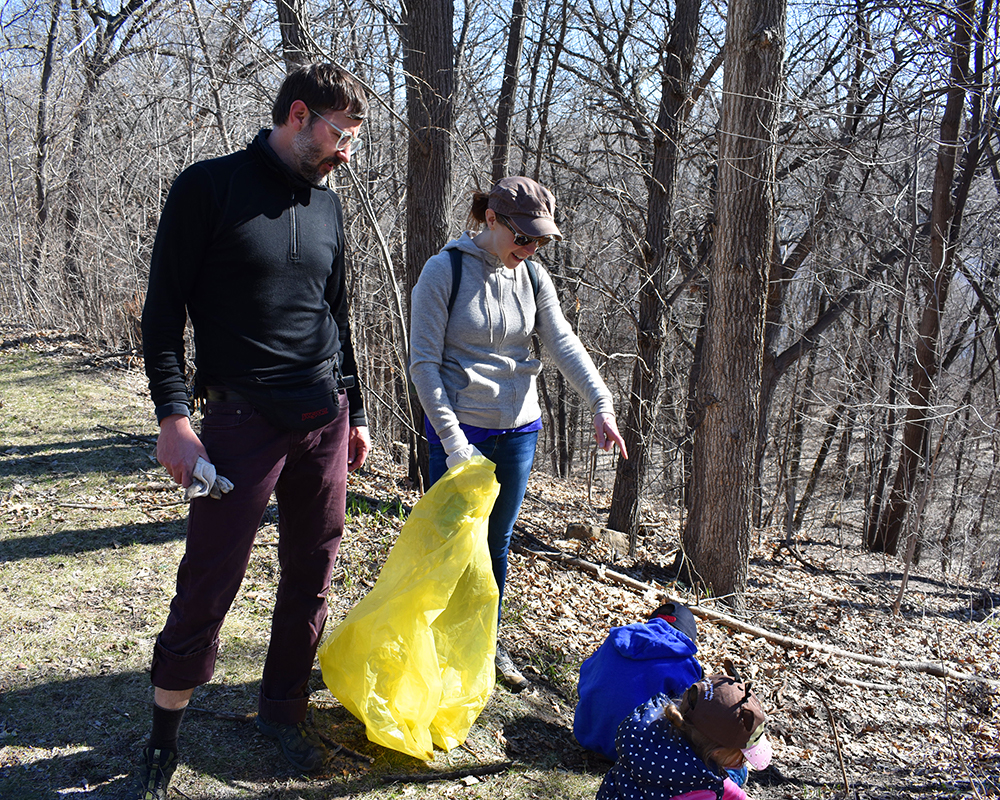
'The River Gorge is part of our community, and we want to clean up the places we spend time in.'
—Shawn Willy, FMR supporter for 10 years
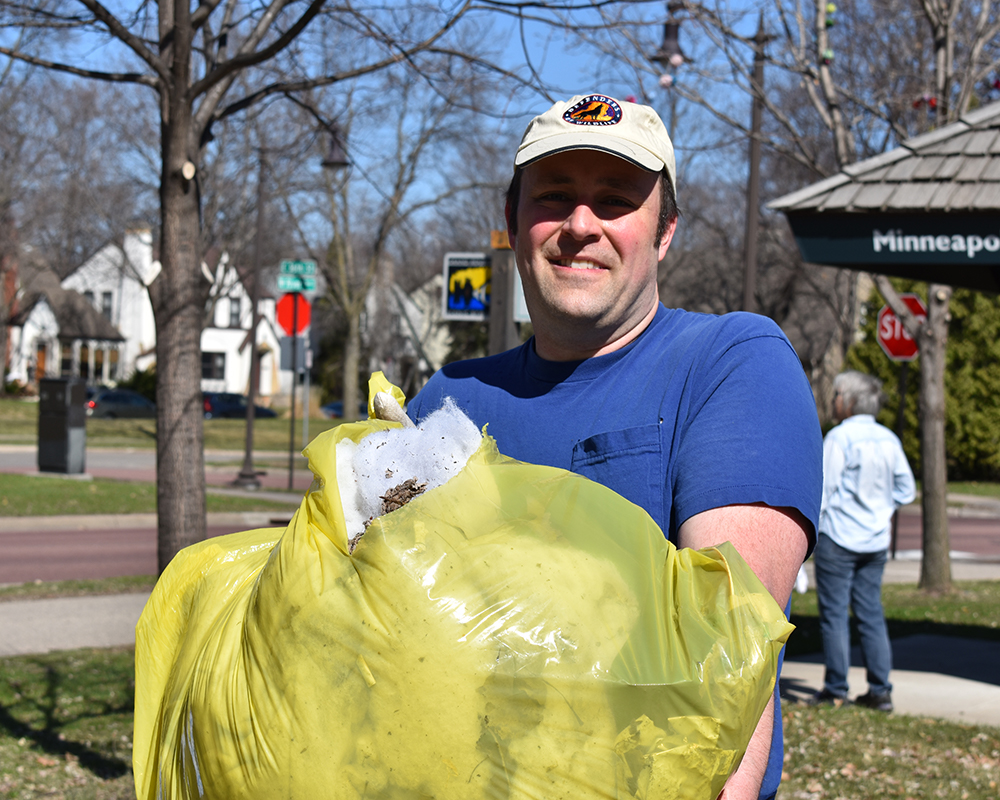
'My daughter and I come to Earth Day together. We enjoy it. We feel like we’re making a difference and it’s a nice way to spend a Saturday morning.'
Through caring and advocating for the river
— its waters, wildlife and communities —
we strengthen our common bond:
A shared responsibility for the place we love,
no matter who we are.
THANK YOU
Together we are realizing
our vision
of a thriving Mississippi River
for future generations.
Statement of Financial Activities
Calendar year 2019 total of unrestricted amounts (audited)
2019 Expenses: $2,508,864
2019 Revenues: $2,514,903
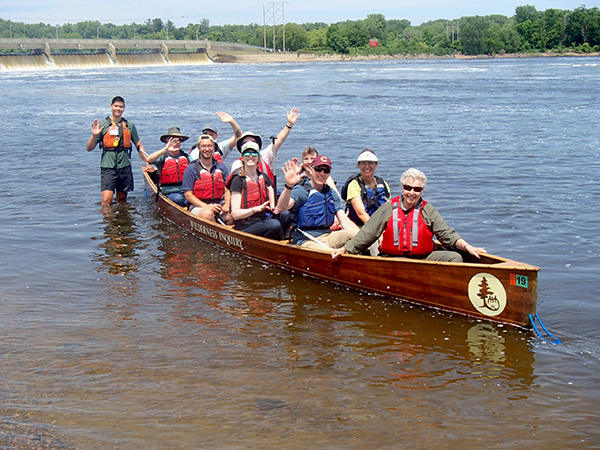
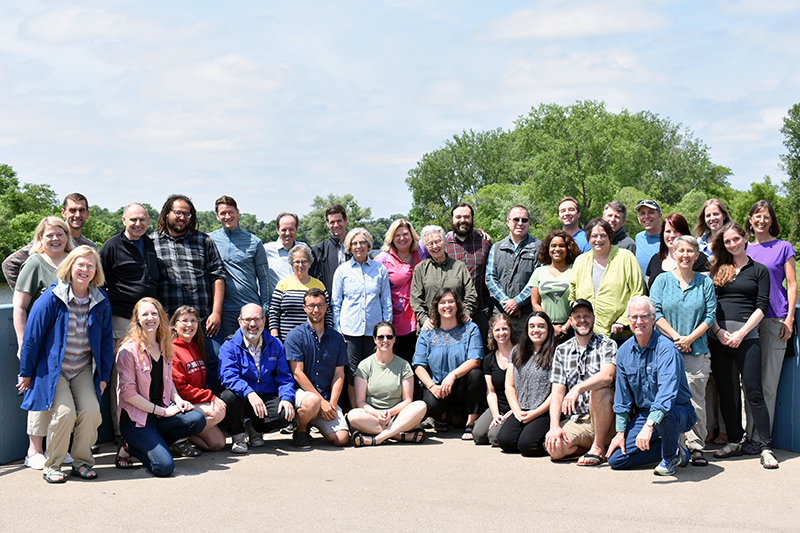
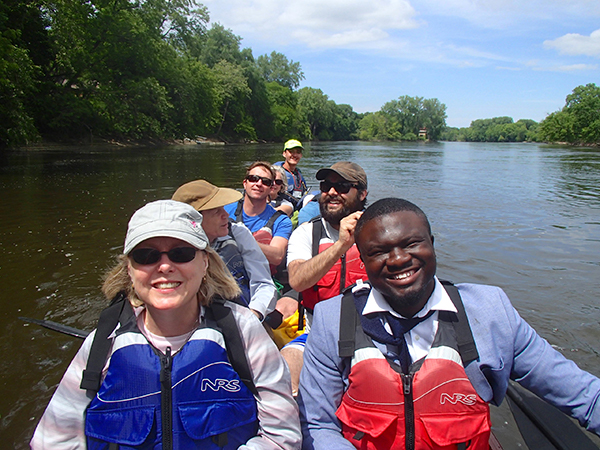
Advisory Board
Paul Aasen
Shirley Hunt Alexander
Michelle Beeman
Charles K. Dayton
David Durenberger
Ron Kroese
George Latimer
Lynn Moratzka
Dr. Michael Osterholm
Phil Riveness
Sen. Tina Smith
John Linc Stine
Dr. Deborah Swackhamer
Liz Wielinski
Our Team
Ronnie Brooks, Chair
Chad Dayton, Vice Chair
Perry McGowan, Treasurer
Peter Gove, Secretary
Jeff Aguy
Marcia Avner
Paul Bauknight
Stewart Crosby
George Dunn
Forrest Flint
Diane Herman
Chris Higgins
Julia Kaemmer
Ryan Mallery
Hokan Miller
Julia Olmstead
Susan Vento
Deanna Wiener
Nou Yang
Dr. John Anfinson (Liaison, nonvoting)
Board of Directors
Staff
Whitney Clark, Executive Director
Kate Clayton, Youth Coordinator
John Czyscon, Development Associate
Betsy Daub, Conservation Director
Sara DeKok, Associate Director-Development Director
Sophie Downey, Volunteer & Outreach Coordinator
Tessa Enroth, Individual Gifts Officer
Adam Flett, Stewardship & Education Program Director
Sheila Gothmann, Finance Director
Jennifer Schuetz Hadley, Database Coordinator
Barb Heintz, Accountant
Peter LaFontaine, Agricultural Policy Manager
Ashley O'Neill Prado, Administrative & Programs Assistant
sue rich, Communications Director
Ellen Rogers, Communications Associate
Alex Roth, Ecologist
Trevor Russell, Water Program Director
Karen Schik, Senior Ecologist
Colleen O'Connor Toberman, River Corridor Director
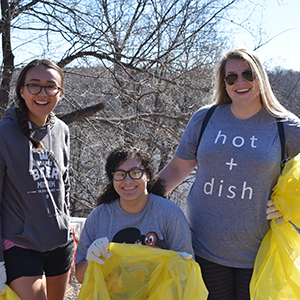
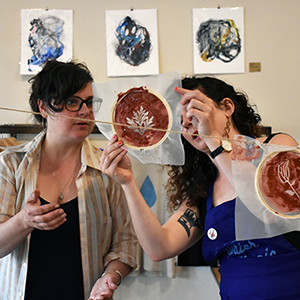
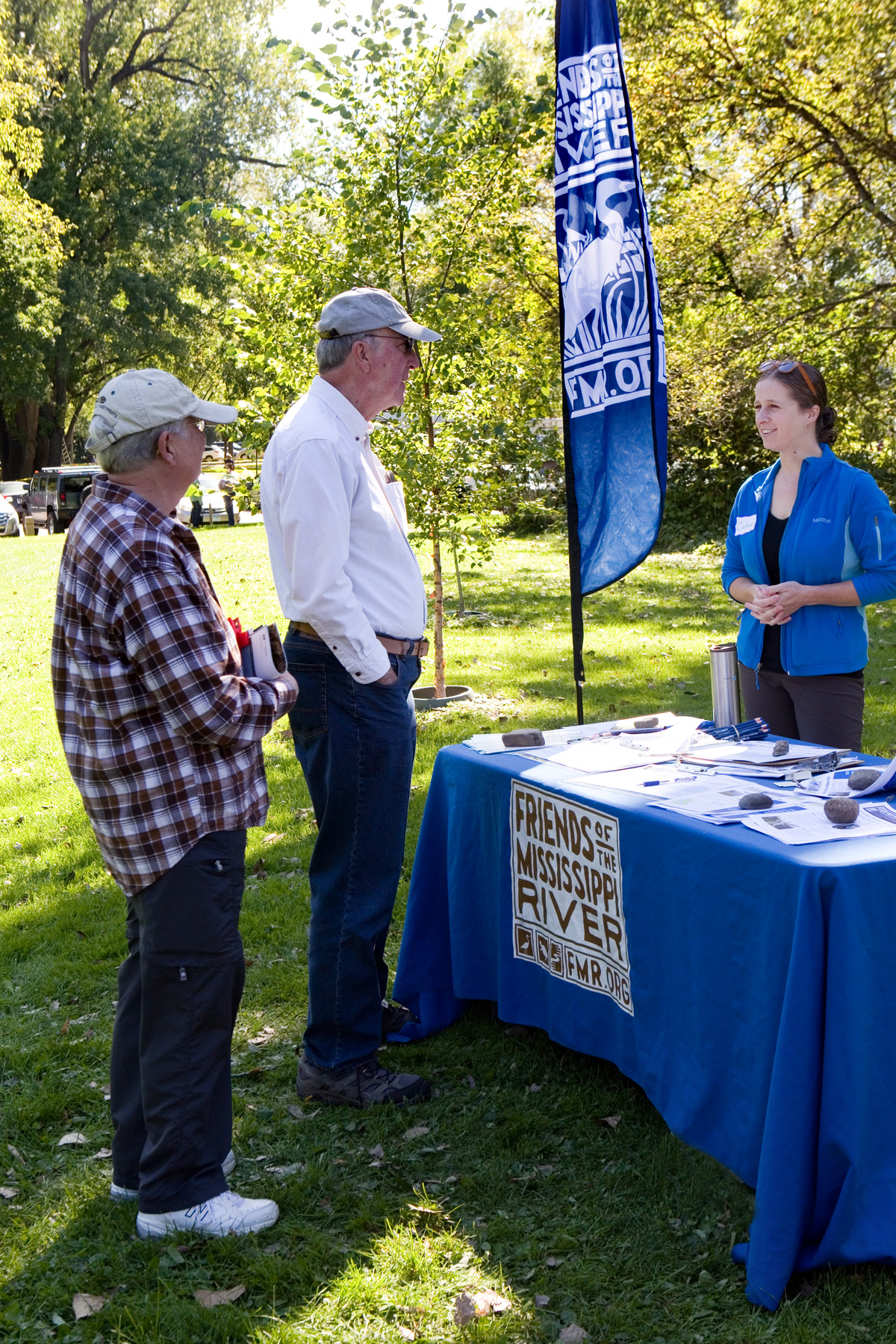

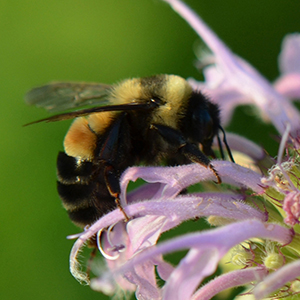
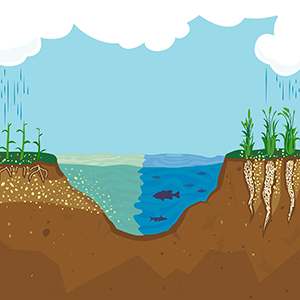
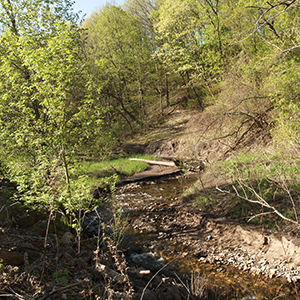
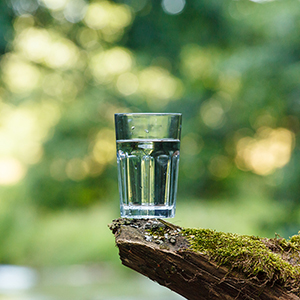
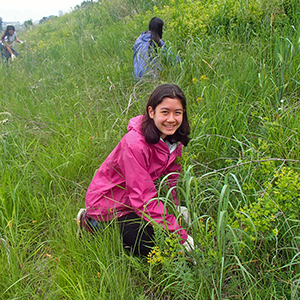
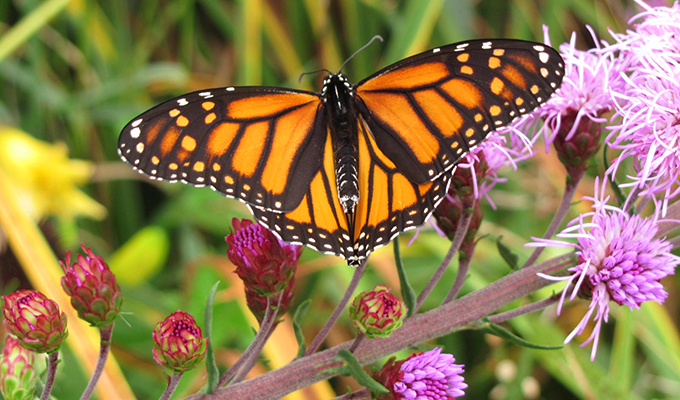
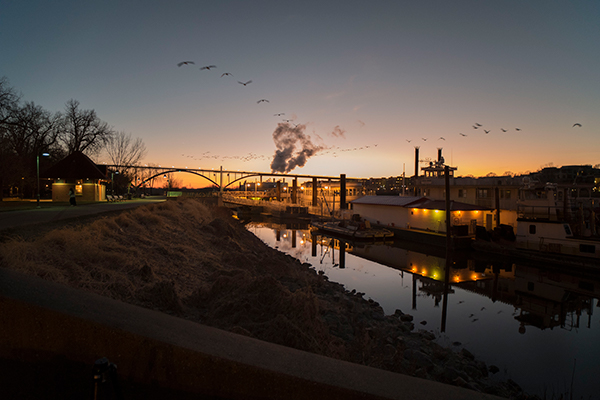
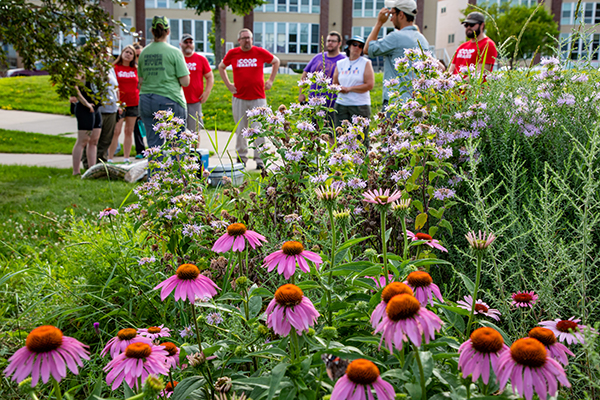


.png)
.png)
.png)